


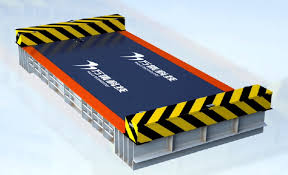
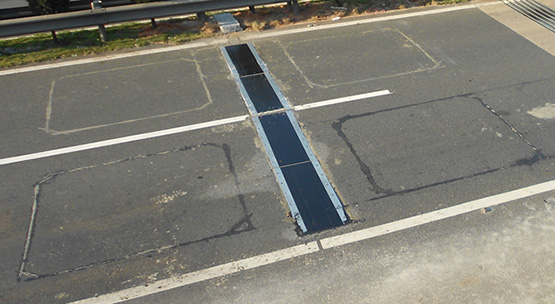
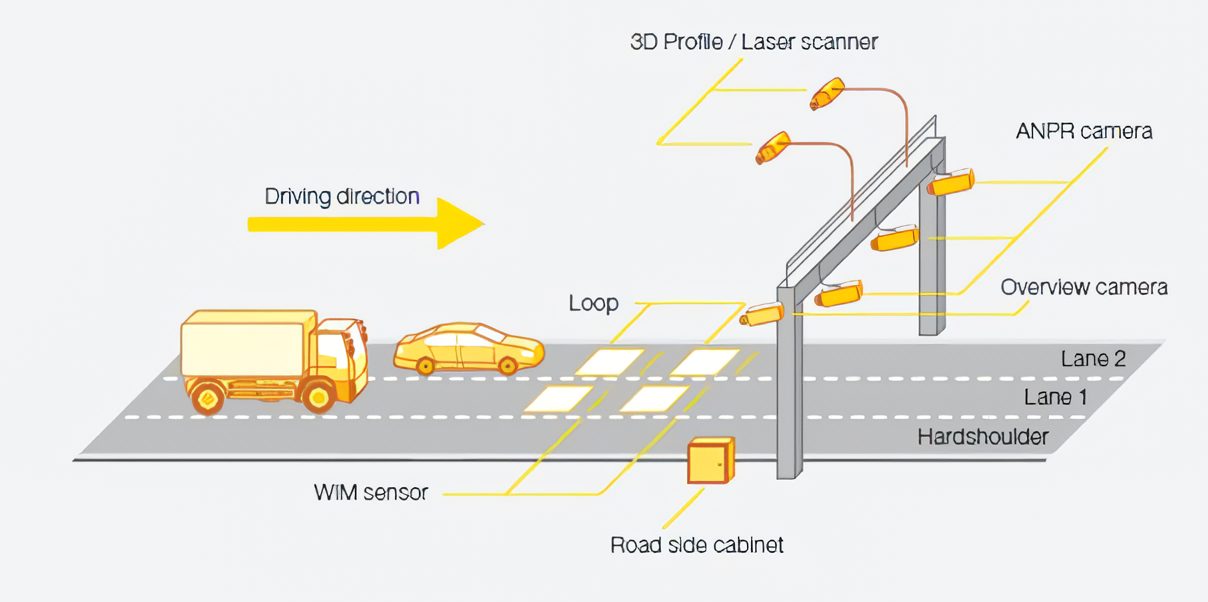
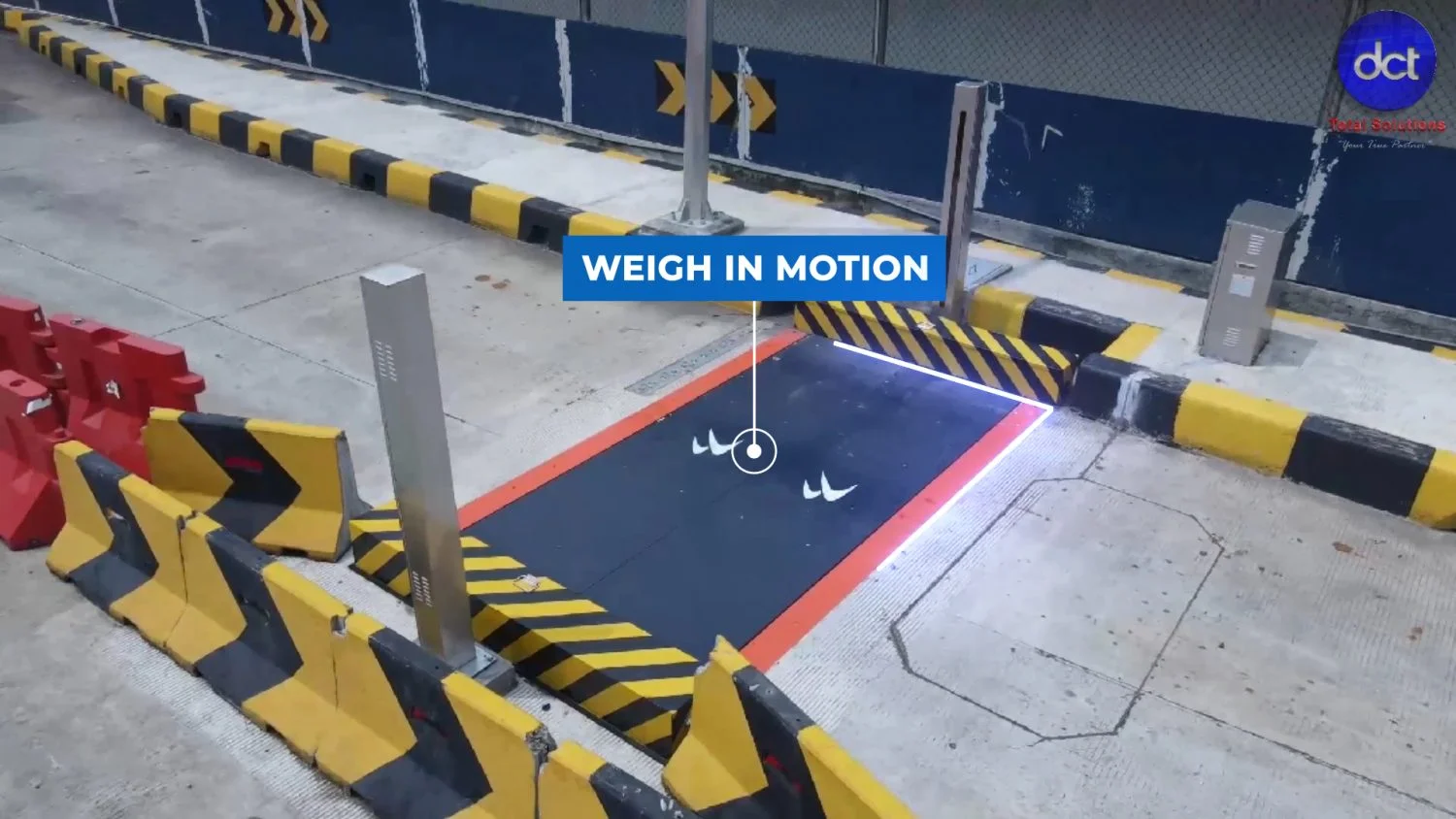
Weight in Motion (WIM) is a technology and methodology used to measure the weight of vehicles while they are in motion. It's a valuable tool for traffic management, road maintenance, and ensuring compliance with weight regulations. Here's an overview of Weight in Motion and its applications:
Weight in Motion (WIM) systems use sensors embedded in the road surface or installed on bridges to measure the weight, speed, and other characteristics of vehicles as they pass over the sensors. These sensors can be inductive loops, piezoelectric sensors, or fiber-optic sensors, among others. The collected data provides valuable insights into the weight distribution of vehicles on the road, allowing authorities to monitor and manage traffic effectively.
The key components of a WIM system include sensors, data processing units, communication devices, and a central data collection and analysis center. The sensors detect and measure the weight of vehicles, which is then transmitted to the data processing unit. The data is further processed, and relevant information is sent to the central data center for analysis and decision-making.
Applications of Weight in Motion technology are numerous:
Weight Enforcement and Compliance: WIM systems are used to monitor and enforce weight regulations for vehicles. Overloaded vehicles can cause damage to the road infrastructure and compromise road safety. By enforcing weight restrictions, authorities can ensure that vehicles are within the legal weight limits.
Road Maintenance and Design: Data collected from WIM systems helps in designing and maintaining roads and bridges to withstand the weight of passing vehicles. Engineers can use this data to assess the stress levels on different sections of the road and make informed decisions regarding maintenance and upgrades.
Traffic Monitoring and Optimization: WIM systems provide real-time data on traffic flow and vehicle weight, allowing for better traffic management and optimization. This information can be used to adjust traffic signals, control congestion, and improve overall traffic flow.
Toll Collection: In some cases, WIM systems are integrated with toll collection systems to determine the appropriate toll charges based on the weight of the vehicle. This ensures fair toll collection and contributes to road maintenance funds.
Research and Planning: WIM data is valuable for research purposes and transportation planning. It helps transportation authorities understand traffic patterns, vehicle loads, and the impact of heavy vehicles on the road network. This knowledge is used to plan for future infrastructure improvements.
aaaWeight in Motion (WIM) is a technology and methodology used to measure the weight of vehicles while they are in motion. It's a valuable tool for traffic management, road maintenance, and ensuring compliance with weight regulations. Here's an overview of Weight in Motion and its applications:
Weight in Motion (WIM) systems use sensors embedded in the road surface or installed on bridges to measure the weight, speed, and other characteristics of vehicles as they pass over the sensors. These sensors can be inductive loops, piezoelectric sensors, or fiber-optic sensors, among others. The collected data provides valuable insights into the weight distribution of vehicles on the road, allowing authorities to monitor and manage traffic effectively.
The key components of a WIM system include sensors, data processing units, communication devices, and a central data collection and analysis center. The sensors detect and measure the weight of vehicles, which is then transmitted to the data processing unit. The data is further processed, and relevant information is sent to the central data center for analysis and decision-making.
Applications of Weight in Motion technology are numerous:
Weight Enforcement and Compliance: WIM systems are used to monitor and enforce weight regulations for vehicles. Overloaded vehicles can cause damage to the road infrastructure and compromise road safety. By enforcing weight restrictions, authorities can ensure that vehicles are within the legal weight limits.
Road Maintenance and Design: Data collected from WIM systems helps in designing and maintaining roads and bridges to withstand the weight of passing vehicles. Engineers can use this data to assess the stress levels on different sections of the road and make informed decisions regarding maintenance and upgrades.
Traffic Monitoring and Optimization: WIM systems provide real-time data on traffic flow and vehicle weight, allowing for better traffic management and optimization. This information can be used to adjust traffic signals, control congestion, and improve overall traffic flow.
Toll Collection: In some cases, WIM systems are integrated with toll collection systems to determine the appropriate toll charges based on the weight of the vehicle. This ensures fair toll collection and contributes to road maintenance funds.
Research and Planning: WIM data is valuable for research purposes and transportation planning. It helps transportation authorities understand traffic patterns, vehicle loads, and the impact of heavy vehicles on the road network. This knowledge is used to plan for future infrastructure improvements.
Weight in Motion (WIM) is a technology and methodology used to measure the weight of vehicles while they are in motion. It's a valuable tool for traffic management, road maintenance, and ensuring compliance with weight regulations. Here's an overview of Weight in Motion and its applications:
Weight in Motion (WIM) systems use sensors embedded in the road surface or installed on bridges to measure the weight, speed, and other characteristics of vehicles as they pass over the sensors. These sensors can be inductive loops, piezoelectric sensors, or fiber-optic sensors, among others. The collected data provides valuable insights into the weight distribution of vehicles on the road, allowing authorities to monitor and manage traffic effectively.
The key components of a WIM system include sensors, data processing units, communication devices, and a central data collection and analysis center. The sensors detect and measure the weight of vehicles, which is then transmitted to the data processing unit. The data is further processed, and relevant information is sent to the central data center for analysis and decision-making.
Applications of Weight in Motion technology are numerous:
Weight Enforcement and Compliance: WIM systems are used to monitor and enforce weight regulations for vehicles. Overloaded vehicles can cause damage to the road infrastructure and compromise road safety. By enforcing weight restrictions, authorities can ensure that vehicles are within the legal weight limits.
Road Maintenance and Design: Data collected from WIM systems helps in designing and maintaining roads and bridges to withstand the weight of passing vehicles. Engineers can use this data to assess the stress levels on different sections of the road and make informed decisions regarding maintenance and upgrades.
Traffic Monitoring and Optimization: WIM systems provide real-time data on traffic flow and vehicle weight, allowing for better traffic management and optimization. This information can be used to adjust traffic signals, control congestion, and improve overall traffic flow.
Toll Collection: In some cases, WIM systems are integrated with toll collection systems to determine the appropriate toll charges based on the weight of the vehicle. This ensures fair toll collection and contributes to road maintenance funds.
Research and Planning: WIM data is valuable for research purposes and transportation planning. It helps transportation authorities understand traffic patterns, vehicle loads, and the impact of heavy vehicles on the road network. This knowledge is used to plan for future infrastructure improvements.










Kami sangat senang untuk memperkenalkan produk terbaru kami: Video Tron! Kami percaya bahwa video adalah cara terbaik untuk mengkomunikasikan pesan Anda kepada audiens, dan Video Tron adalah solusi terdepan yang akan membawa keajaiban visual ke dalam bisnis Anda.
Apa itu Video Tron?
Video Tron adalah solusi video kustom yang dirancang khusus untuk memenuhi kebutuhan bisnis Anda. Ini adalah platform inovatif yang akan membantu Anda menciptakan video berkualitas tinggi yang akan mengesankan pelanggan Anda, meningkatkan pengenalan merek, dan meningkatkan penjualan. Dengan Video Tron, Anda dapat:
Menciptakan Video Visual yang Mengagumkan: Dari video promosi hingga animasi yang dinamis, Video Tron memungkinkan Anda membuat konten video yang penuh warna dan berkesan.
Penyesuaian yang Tak Terbatas: Kami memberikan Anda kontrol penuh atas desain video Anda. Pilih dari berbagai template yang dapat disesuaikan, tambahkan teks, grafik, dan musik sesuai keinginan Anda.
Integrasi Mudah: Video Tron dapat dengan mudah diintegrasikan dengan platform media sosial, situs web, dan saluran pemasaran lainnya, memastikan bahwa video Anda mencapai audiens yang tepat.
Kemudahan Penggunaan: Tidak perlu menjadi seorang pro dalam desain grafis atau produksi video. Video Tron sangat mudah digunakan dan didukung oleh tim dukungan pelanggan kami yang ramah.
Apa Manfaatnya untuk Bisnis Anda?
Dengan menggunakan Video Tron, Anda akan mendapatkan manfaat berikut:
1. Meningkatkan terkenalnya merek Anda melalui konten visual yang kuat.
2. Meningkatkan keterlibatan pelanggan dan konversi.
3. Membangun kredibilitas dan kepercayaan dengan video berkualitas tinggi.
4. Menyampaikan pesan Anda dengan cara yang menghibur dan edukatif.
Kami sangat senang untuk memperkenalkan produk terbaru kami: Video Tron! Kami percaya bahwa video adalah cara terbaik untuk mengkomunikasikan pesan Anda kepada audiens, dan Video Tron adalah solusi terdepan yang akan membawa keajaiban visual ke dalam bisnis Anda.
Apa itu Video Tron?
Video Tron adalah solusi video kustom yang dirancang khusus untuk memenuhi kebutuhan bisnis Anda. Ini adalah platform inovatif yang akan membantu Anda menciptakan video berkualitas tinggi yang akan mengesankan pelanggan Anda, meningkatkan pengenalan merek, dan meningkatkan penjualan. Dengan Video Tron, Anda dapat:
Menciptakan Video Visual yang Mengagumkan: Dari video promosi hingga animasi yang dinamis, Video Tron memungkinkan Anda membuat konten video yang penuh warna dan berkesan.
Penyesuaian yang Tak Terbatas: Kami memberikan Anda kontrol penuh atas desain video Anda. Pilih dari berbagai template yang dapat disesuaikan, tambahkan teks, grafik, dan musik sesuai keinginan Anda.
Integrasi Mudah: Video Tron dapat dengan mudah diintegrasikan dengan platform media sosial, situs web, dan saluran pemasaran lainnya, memastikan bahwa video Anda mencapai audiens yang tepat.
Kemudahan Penggunaan: Tidak perlu menjadi seorang pro dalam desain grafis atau produksi video. Video Tron sangat mudah digunakan dan didukung oleh tim dukungan pelanggan kami yang ramah.
Apa Manfaatnya untuk Bisnis Anda?
Dengan menggunakan Video Tron, Anda akan mendapatkan manfaat berikut:
1. Meningkatkan terkenalnya merek Anda melalui konten visual yang kuat.
2. Meningkatkan keterlibatan pelanggan dan konversi.
3. Membangun kredibilitas dan kepercayaan dengan video berkualitas tinggi.
4. Menyampaikan pesan Anda dengan cara yang menghibur dan edukatif.
Kami sangat senang untuk memperkenalkan produk terbaru kami: Video Tron! Kami percaya bahwa video adalah cara terbaik untuk mengkomunikasikan pesan Anda kepada audiens, dan Video Tron adalah solusi terdepan yang akan membawa keajaiban visual ke dalam bisnis Anda.
Apa itu Video Tron?
Video Tron adalah solusi video kustom yang dirancang khusus untuk memenuhi kebutuhan bisnis Anda. Ini adalah platform inovatif yang akan membantu Anda menciptakan video berkualitas tinggi yang akan mengesankan pelanggan Anda, meningkatkan pengenalan merek, dan meningkatkan penjualan. Dengan Video Tron, Anda dapat:
Menciptakan Video Visual yang Mengagumkan: Dari video promosi hingga animasi yang dinamis, Video Tron memungkinkan Anda membuat konten video yang penuh warna dan berkesan.
Penyesuaian yang Tak Terbatas: Kami memberikan Anda kontrol penuh atas desain video Anda. Pilih dari berbagai template yang dapat disesuaikan, tambahkan teks, grafik, dan musik sesuai keinginan Anda.
Integrasi Mudah: Video Tron dapat dengan mudah diintegrasikan dengan platform media sosial, situs web, dan saluran pemasaran lainnya, memastikan bahwa video Anda mencapai audiens yang tepat.
Kemudahan Penggunaan: Tidak perlu menjadi seorang pro dalam desain grafis atau produksi video. Video Tron sangat mudah digunakan dan didukung oleh tim dukungan pelanggan kami yang ramah.
Apa Manfaatnya untuk Bisnis Anda?
Dengan menggunakan Video Tron, Anda akan mendapatkan manfaat berikut:
1. Meningkatkan terkenalnya merek Anda melalui konten visual yang kuat.
2. Meningkatkan keterlibatan pelanggan dan konversi.
3. Membangun kredibilitas dan kepercayaan dengan video berkualitas tinggi.
4. Menyampaikan pesan Anda dengan cara yang menghibur dan edukatif.


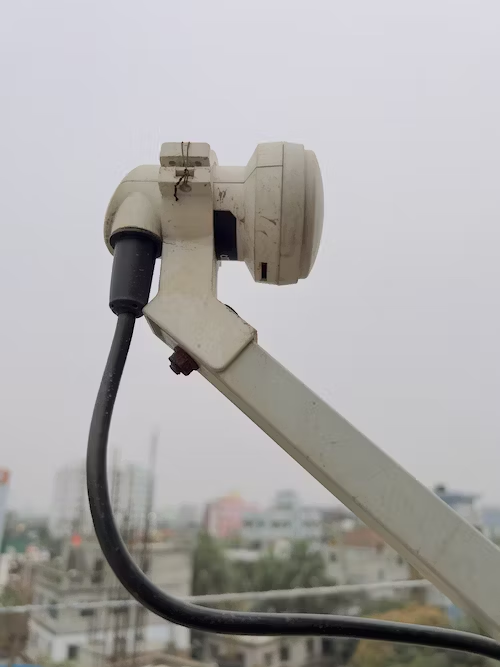







Light Distance And Ranging atau yang biasa kita kenal dengan LiDAR merupakan salah satu metode pendeteksian objek yang menggunakan prinsip pantulan sinar laser untuk mengukur jarak objek di permukaan bumi. Teknologi ini pertama kali digunakan pada tahun 1960an untuk tujuan penerbangan, namun baru mendapatkan popularitas dalam sistem pemetaan dari tahun 1980an hingga saat ini.
Prinsip kerja lidar sebenarnya sangat sederhana. LiDAR menghitung jarak dengan memancarkan cahaya dari pemancar laser ke suatu permukaan dan kemudian menghitung waktu yang diperlukan sinar laser untuk kembali ke penerima.
Perangkat LiDAR menembakkan sinar laser ke suatu permukaan dengan cepat, dan beberapa perangkat LiDAR menembakkan sekitar 150.000 pulsa laser per detik. Komponen sensor di lidar kemudian menghitung waktu yang diperlukan setiap pulsa laser untuk memantul dari permukaan ke sensor, sehingga menghasilkan penghitungan jarak yang sangat akurat.
Komponen-komponen yang terdapat pada Lidar :
Laser:
Road Maintenance and Design: Data collected from WIM systems helps in designing and maintaining roads and bridges to withstand the weight of passing vehicles. Engineers can use this data to assess the stress levels on different sections of the road and make informed decisions regarding maintenance and upgrades.
Traffic Monitoring and Optimization: WIM systems provide real-time data on traffic flow and vehicle weight, allowing for better traffic management and optimization. This information can be used to adjust traffic signals, control congestion, and improve overall traffic flow.
Toll Collection: In some cases, WIM systems are integrated with toll collection systems to determine the appropriate toll charges based on the weight of the vehicle. This ensures fair toll collection and contributes to road maintenance funds.
Research and Planning: WIM data is valuable for research purposes and transportation planning. It helps transportation authorities understand traffic patterns, vehicle loads, and the impact of heavy vehicles on the road network. This knowledge is used to plan for future infrastructure improvements.
Light Distance And Ranging atau yang biasa kita kenal dengan LiDAR merupakan salah satu metode pendeteksian objek yang menggunakan prinsip pantulan sinar laser untuk mengukur jarak objek di permukaan bumi. Teknologi ini pertama kali digunakan pada tahun 1960an untuk tujuan penerbangan, namun baru mendapatkan popularitas dalam sistem pemetaan dari tahun 1980an hingga saat ini.
Prinsip kerja lidar sebenarnya sangat sederhana. LiDAR menghitung jarak dengan memancarkan cahaya dari pemancar laser ke suatu permukaan dan kemudian menghitung waktu yang diperlukan sinar laser untuk kembali ke penerima.
Perangkat LiDAR menembakkan sinar laser ke suatu permukaan dengan cepat, dan beberapa perangkat LiDAR menembakkan sekitar 150.000 pulsa laser per detik. Komponen sensor di lidar kemudian menghitung waktu yang diperlukan setiap pulsa laser untuk memantul dari permukaan ke sensor, sehingga menghasilkan penghitungan jarak yang sangat akurat.
Komponen-komponen yang terdapat pada Lidar :
Laser:
Road Maintenance and Design: Data collected from WIM systems helps in designing and maintaining roads and bridges to withstand the weight of passing vehicles. Engineers can use this data to assess the stress levels on different sections of the road and make informed decisions regarding maintenance and upgrades.
Traffic Monitoring and Optimization: WIM systems provide real-time data on traffic flow and vehicle weight, allowing for better traffic management and optimization. This information can be used to adjust traffic signals, control congestion, and improve overall traffic flow.
Toll Collection: In some cases, WIM systems are integrated with toll collection systems to determine the appropriate toll charges based on the weight of the vehicle. This ensures fair toll collection and contributes to road maintenance funds.
Research and Planning: WIM data is valuable for research purposes and transportation planning. It helps transportation authorities understand traffic patterns, vehicle loads, and the impact of heavy vehicles on the road network. This knowledge is used to plan for future infrastructure improvements.
Light Distance And Ranging atau yang biasa kita kenal dengan LiDAR merupakan salah satu metode pendeteksian objek yang menggunakan prinsip pantulan sinar laser untuk mengukur jarak objek di permukaan bumi. Teknologi ini pertama kali digunakan pada tahun 1960an untuk tujuan penerbangan, namun baru mendapatkan popularitas dalam sistem pemetaan dari tahun 1980an hingga saat ini.
Prinsip kerja lidar sebenarnya sangat sederhana. LiDAR menghitung jarak dengan memancarkan cahaya dari pemancar laser ke suatu permukaan dan kemudian menghitung waktu yang diperlukan sinar laser untuk kembali ke penerima.
Perangkat LiDAR menembakkan sinar laser ke suatu permukaan dengan cepat, dan beberapa perangkat LiDAR menembakkan sekitar 150.000 pulsa laser per detik. Komponen sensor di lidar kemudian menghitung waktu yang diperlukan setiap pulsa laser untuk memantul dari permukaan ke sensor, sehingga menghasilkan penghitungan jarak yang sangat akurat.
Komponen-komponen yang terdapat pada Lidar :
Laser:
Road Maintenance and Design: Data collected from WIM systems helps in designing and maintaining roads and bridges to withstand the weight of passing vehicles. Engineers can use this data to assess the stress levels on different sections of the road and make informed decisions regarding maintenance and upgrades.
Traffic Monitoring and Optimization: WIM systems provide real-time data on traffic flow and vehicle weight, allowing for better traffic management and optimization. This information can be used to adjust traffic signals, control congestion, and improve overall traffic flow.
Toll Collection: In some cases, WIM systems are integrated with toll collection systems to determine the appropriate toll charges based on the weight of the vehicle. This ensures fair toll collection and contributes to road maintenance funds.
Research and Planning: WIM data is valuable for research purposes and transportation planning. It helps transportation authorities understand traffic patterns, vehicle loads, and the impact of heavy vehicles on the road network. This knowledge is used to plan for future infrastructure improvements.










Kamera Pengawas Jalan Raya kami dirancang untuk memenuhi berbagai kebutuhan pengawasan dan pemantauan jalan raya. Berikut adalah beberapa produk unggulan kami:
Kami adalah Mitra Keamanan Anda:
Kami mengerti betapa pentingnya keamanan jalan raya dan pemantauan lalu lintas yang efisien. Dengan produk dan layanan kami, Anda dapat memastikan bahwa jalan raya tetap aman, lalu lintas berjalan lancar, dan situasi darurat dapat ditangani dengan cepat.
Kamera Pengawas Jalan Raya kami dirancang untuk memenuhi berbagai kebutuhan pengawasan dan pemantauan jalan raya. Berikut adalah beberapa produk unggulan kami:
Kami adalah Mitra Keamanan Anda:
Kami mengerti betapa pentingnya keamanan jalan raya dan pemantauan lalu lintas yang efisien. Dengan produk dan layanan kami, Anda dapat memastikan bahwa jalan raya tetap aman, lalu lintas berjalan lancar, dan situasi darurat dapat ditangani dengan cepat.
Kamera Pengawas Jalan Raya kami dirancang untuk memenuhi berbagai kebutuhan pengawasan dan pemantauan jalan raya. Berikut adalah beberapa produk unggulan kami:
Kami adalah Mitra Keamanan Anda:
Kami mengerti betapa pentingnya keamanan jalan raya dan pemantauan lalu lintas yang efisien. Dengan produk dan layanan kami, Anda dapat memastikan bahwa jalan raya tetap aman, lalu lintas berjalan lancar, dan situasi darurat dapat ditangani dengan cepat.




PT Ciptama Karya Sukses Total Solutions adalah perusahaan yang bergerak di Networking, IT Contractor & Toll Equipments
Jl. Karya No.36, Sei Agul, Kec. Medan Bar., Kota Medan, Sumatera Utara 20117
Copyright © 2023 PT Ciptama Karya Sukses

PT Ciptama Karya Sukses Total Solutions adalah perusahaan yang bergerak di Networking, IT Contractor & Toll Equipments
Jl. Karya No.36, Sei Agul, Kec. Medan Bar., Kota Medan, Sumatera Utara 20117
Copyright © 2023 PT Ciptama Karya Sukses